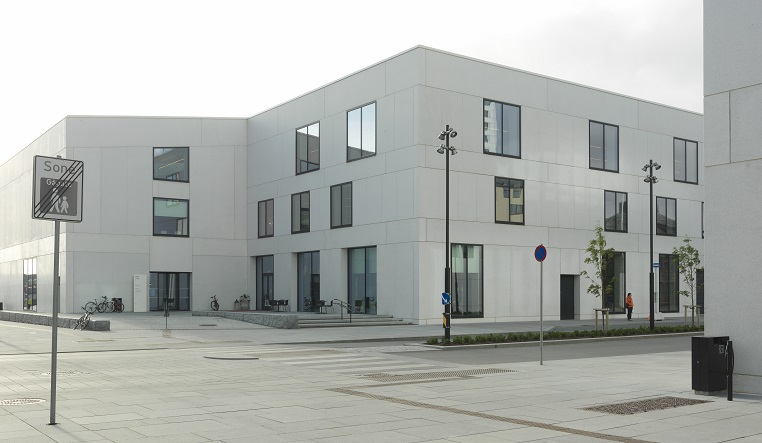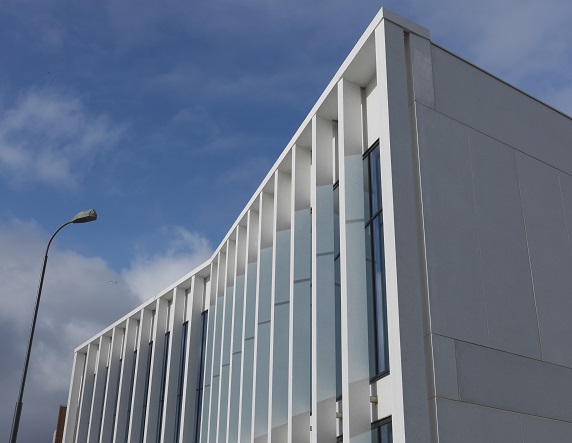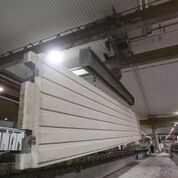Concrete Perspective October 2017
Construction Sector
Housing Europe publishes State of Housing in EU report
On 17 October, Housing Europe presented its State of Housing in the EU report in the European Parliament and at the Committee of the Regions. The report includes:
- Detailed statistics per EU Member State
- The latest housing trends in a cross-country observation
- A compilation of the most significant policy updates since 2015
- Analysis of the interaction of housing policies and EU policies
- The effect that challenges at local level have on housing
An Action Plan to decrease the stock of non-cited harmonised standards
Joint efforts by the European Commission (EC) and the European Standardization Organizations (ESOs) address the issue of increasing non-cited harmonised standards.
In the short-term (2017- early 2018), the EC and CEN and CENELEC (the European Committee for Standardization (CEN), the European Committee for Electrotechnical Standardization (CENELEC)) will focus on a series of candidate harmonized standards that were blocked due to administrative reasons and/or required more in-depth analysis/discussions, in view of taking the necessary steps allowing their citation in the OJEU.
The 2nd short-term action is related to the system of ‘New Approach Consultants’ (NAC) where EC and CEN and CENELEC will collaborate to have a smooth and continuous transition from the current system to the new framework of ‘HArmonized Standards Consultants’ (HAS) that the EC is installing.
Live from the European Union
Efficient and Professional Public Procurement
European Commission published an initiative to promote efficient and professional procurement.
The initiative is expected to help to carry out procurement more efficiently and in a sustainable manner, while making full use of digital technologies to simplify and accelerate procedures.
This initiative has four main strands: definition of priority areas for improvement; voluntary ex-ante assessment of large infrastructure projects; recommendation on professionalisation of public buyers and consultation on stimulating innovation through public procurement.
European Commission – Press Release
European Parliament’s ITRE Committee adopts draft report on Energy Performance of Building Directive
The ITRE (Industry, Research and Energy) Committee adopted the draft report prepared by MEP Bendtsen. BIBM and the European Concrete Platform welcomed the acknowledgement of thermal storage and the importance of shifting demand when it comes to the use renewable energies.
However, the draft report contains some points that are required revision and should be changed. The report untruly states that “construction with wood is good for the climate.” Furthermore, it envisages the extension of the scope to embodied energy by 2024.
Please see here the reaction paper of the European Concrete Platform sent to the Estonian Presidency.
European Parliament adopts the Carcinogens Directive
On 25 October, the plenary sitting of the European Parliament adopted the revised Carcinogens Directive. The adopted version is the result of the Trialogue negotiations (European Parliament, Commission and Council of EU).
The agreed version contains a limit value for Respirable Crystalline Silica of 0,1 mg/m3, while the scope is “Work involving exposure to respirable crystalline silica dust generated by a work process”.
Once endorsed by the Council, the new rules will be published in the EU Official Journal and will enter into force 20 days after publication. Member States will have then two years to translate the Directive into national law.
For the time being the industry will collect data between 15 January and 15 March 2018 according to the NEPSI agreement.
First meeting of the Fire Information Exchange Platform
On 16 October, the very first meeting of the new Fire Information Exchange Platform (FIEP) will be organised by the European Commission in Brussels.[1]
25 Member States and 25 associations came to discuss key challenges for fire safety in buildings. The Ministry of Interior of the Republic of Slovakia, a pioneer of collaboration between member states on this topic, presented the conclusions of a 2016 roundtable.
Member States shared main concerns, regulatory needs and expectations from the new platform, such as the need for data on fires to better understand and address the problem. The European Commission updated participants on their work regarding fire safety of buildings and fire performance of products.
The Commission also gave an overview of the current studies led by DG GROW: the study regarding the need to regulate toxicity of smoke produced by construction products in fire and the study on the development of a European approach to assess the fire performance of façades. The BRE presented the conclusions on the smoke study, informing participants that the report would soon be released.
Fire Safe Europe (FSEU) gave a presentation on regulatory challenges regarding fire safety in buildings. “We believe that we can overcome regulatory challenges with an EU fire safety strategy. The EU has already done so for road safety, which is also a Member State competence. In 2001 a strategy was put in place which lead to great reductions in the number of deaths” says Juliette Albiac, Managing Director of FSEU. Together with 15 partner organisations, FSEU envisages a fire safety strategy based on a holistic approach to fire safety, aimed at gathering comparable data, cooperation between Member States, and setting a vision with clear goals for fire safety. The United Kingdom and Italy also spoke on regulatory challenges, together with several organisations: the Forum for European Electrical Safety (FEEDS), the European Association for ETICS (EAE), the Federation of the European Union Fire Officers Associations (FEU), the European Firefighters Unions Alliance (EFFUA), Euralarm, Construction Products Europe (CPE) and PU Europe.
FSEU also presented a study on the urgent topic of fire safety in high rise buildings. The FSEU study compares legislation in different Member States and highlights why high rise is a key priority. Both presentations can be downloaded on the FSEU website.
Another hot topic was the Eurocodes standards and the use of fire safety engineering principles, on which the Commission’s Joint Research Centre (JRC) gave an update. FSEU believes that although Fire Safety Engineering presents great opportunities, especially for non-typical buildings, this approach presents risks if it is abused: the success or otherwise of FSE depends very much on how it is applied, and it is thus crucial to use caution and make sure that it is applied by competent designers.
Concluding the meeting, the European Commission identified five main work streams for the new platform going forward:
Data
- Fire prevention
- Lessons learned
- New products
- Fire Safety Engineering
[1] Source : Fire Safe Europe
National Award Winner
Stormen – Norway[1]
Architects: DRDH Architects
Location: Bodø, Norway
Directors: Daniel Rosbottom, David Howarth
Project team leader: Jillian Jones
Design team Concert Hall:Ewan Stone (project architect), Patrick Haymann (project architect Main Hall), Mayuko Kanasugi, Jacob Sjöblom, Phoung Pham, Jef Driesen
Design team Library: Richard Marks (project architect), Paolo Scianna, Victoria Jessen Pike, Cecilia Sjöholm
Competition: Matthew Phillips, Jonathon Connolly, David de la Mare, Kristin Nilsen
Area: 17500.0 sqm
Project Year: 2014
Photographs: David Grandorge
[1] Source: https://www.arup.com/projects/stormen-kulturkvartalet-norway

Situated above the Arctic Circle in the Norwegian city of Bodø, Stormen is a brand new cultural centre. Designed by London-based DRDH Architects and built against a backdrop of mountains and fjords, it houses a waterfront library and four performing arts venues.
DRDH and Bodø Kommune appointed Arup to provide specialist acoustic, theatre planning and technical systems design from concept to completion. The engineers also provided concept designs for the building’s mechanical, electrical and structural elements.
In 2015, the Institute of Acoustics awarded the team at Arup with the Peter Lord Award for the building’s outstanding and innovative acoustic design.
Stormen was also named The AJ’s Building of the Year 2014 and has been awarded the prestigious Norwegian State Architecture Prize.

The centrepiece of the Kulturhus is the spectacular Store Sal – a 944 seat theatre and orchestral concert hall. An array of innovative technologies enables the Hall to be truly dual-purpose.
As a theatre, its large stage, full-height fly tower and variable-sized orchestra pit allow it to host complex theatrical and televised shows. When transformed to a traditional shoebox concert hall, it can deliver world-class symphonic performances in a critically acclaimed acoustic. It is a rare breed: both theatre and concert hall, without compromise to the quality of either.

Stormen also contains a smaller multi-purpose drama and recital hall, a basement jazz and rock music club and a community studio. All the venues can be used simultaneously without even a hint of sound breakthrough.
The Store Sal auditorium was designed by Arup’s theatre consultants and DRDH Architects. Unique and fully-flexible this space can seamlessly transformation from concert hall to proscenium theatre in little more than an hour.

Instead of a conventional orchestral shell, which would require significant on-stage storage space, the orchestra is enclosed by 14m high wall panels. These walls are moved easily (by one person) on an overhead track system and stored against a side stage wall. Acoustic reflectors and motorised ceiling panels can be flown or folded into place above the stage, and together with the wall panels dramatically change the acoustics and aesthetics of the space. In theatre-mode, a pair of panels hinge around to form the sides of the proscenium arch and the top is completed with a folding header panel.

The side and rear walls of the auditorium conceal a series of sliding panels that vary the acoustic character of the room. There is a moving lighting bridge which provides access to lighting positions and strong points set in the auditorium ceiling, accessed from a high level technical gallery and a forestage rigging grid. The fly tower houses a full set of motorised flying bars for scenery and lighting.
News in brief

Agenda
NOVEMBER
7 November
BIBM Environment Commission
Brussels, Belgium
8 November
CSC General Assembly
Heidelberg, Germany
10 November
NEPSI Council
Brussels, Belgium
14 November
ECP TF Fire and Eurocodes
Brussels, Belgium
15 November
CPE TF CPR Implementation
Brussels, Belgium
17 November
NEPSI Training Session
Brussels, Belgium
20 November
BIBM Board meeting
Brussels, Belgium
21 November
Concrete Dialogue
Brussels, Belgium
23 November
ECP TF HEH
Brussels, Belgium
28 November
BIBM Wastewater Engineering
Brussels, Belgium
29 November
BIBM TF Eurocode 2
Brussels, Belgium
DECEMBER
4 December
Level(s) pilot workshop
Brussels, Belgium
7 December
CPE – CPR working group
Brussels, Belgium
8 December
CEN workshop on Smart CE-marking
Brussels, Belgium
11 December
EU pave anniversary
Brussels, Belgium
JANUARY
10 January
BIBM Technical Commission
Brussels, Belgium
11-12 January
ECO-Binder General Assembly
Brussels, Belgium
23 January
EMA meeting
Brussels, Belgium
To the Newsletter of Construction Products Europe (former CEPMC), please follow this link.
To read the Newsletter of CEMBUREAU, please follow this link. You can also subscribe directly following this link http://www.cembureau.eu/newsletter/subscriptions.
To read the Quarterly Newsletter of The Concrete Initiative, please follow this link.
List of Acronyms:
CPE – Construction Product Europe
CSC – Concrete Sustainability Council
DG GROW – Directorate-General for Internal Market, Industry, Entrepreneurship and SMEs
ECP – European Concrete Platform
EMA – European Masonry Alliance
IPHA – International Pre-stressed Hollowcore Association
TF – Task Force
